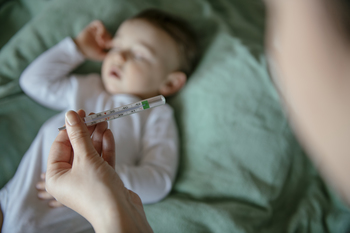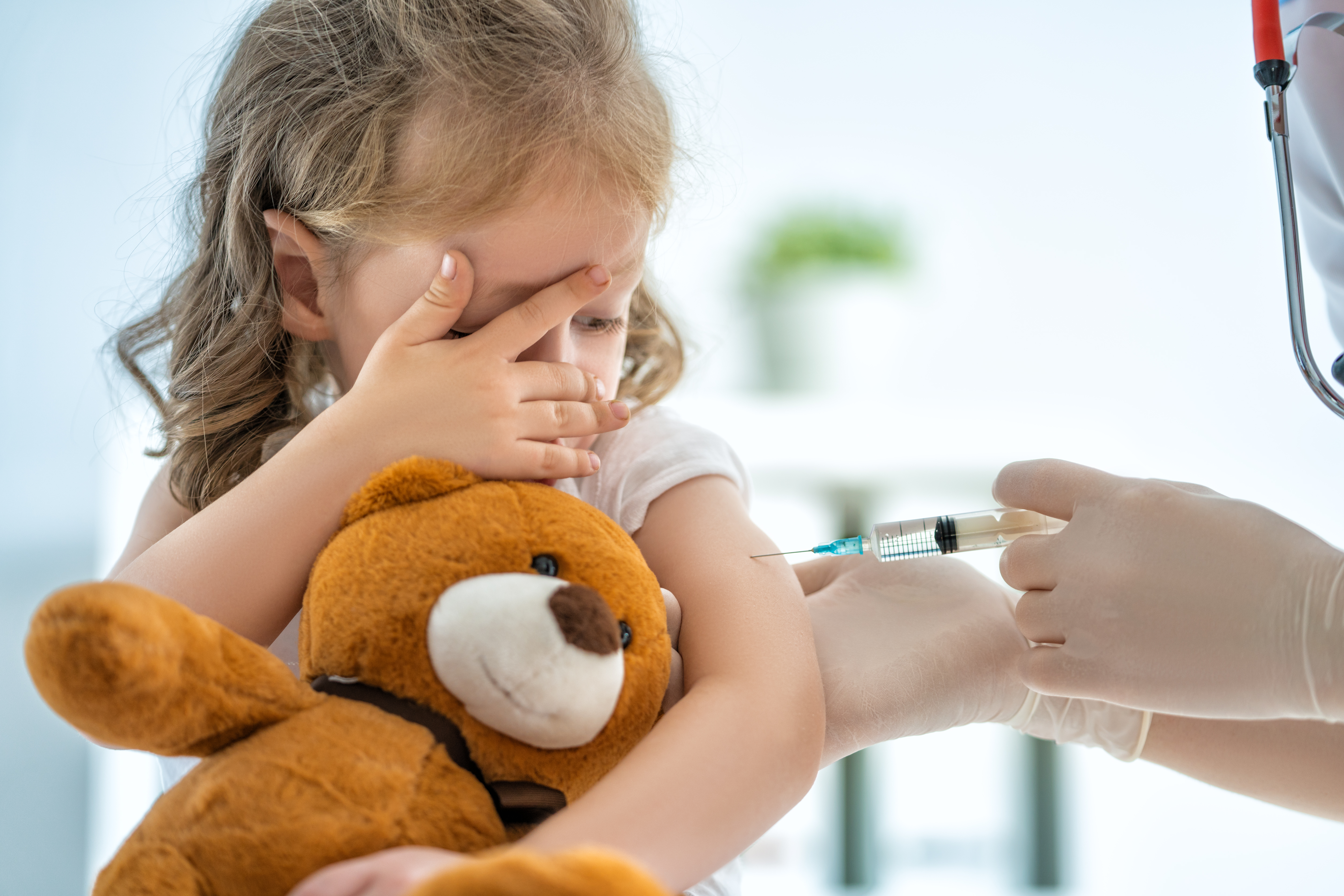What is 'real' flu and what is a cold?
The flu is an acute, often serious illness—especially for children with a chronic illness (e.g., asthma or heart disease). It should therefore not be confused with a flu-like infection. A flu-like infection is a cold. Colds can significantly affect a child's well-being, but they are usually harmless.
The "real" flu (technically "influenza") is a respiratory disease that also weakens the immune system and can spread to the lungs, heart and brain. It should not be confused with infections of the gastrointestinal tract, which are often simply called "gastrointestinal flu".
| Flu – Influenza | Cold (flu-like infection) |
|---|---|
| Sudden onset | Slow onset with itching in the throat |
| Clear feeling of being ill | Gradual deterioration, fatigue |
| Severe headache and aching limbs | Moderate headache, sometimes pain in the limbs |
| High fever, difficult to reduce | Fever is only moderate, easy to reduce |
| Painful, dry cough from the outset | Initially dry cough, then productive cough, runny nose |
| Minimal sore throat | Sore throat, usually at the beginning |
How do you catch the flu, especially as a child?
The flu is caused by influenza viruses. They are highly contagious and are transmitted from person to person. The infection is transmitted by droplet infection—for example, when speaking, or especially when coughing and sneezing.
The viruses reach the mucous membranes of the respiratory tract via the inhaled air or through direct contact (for example, via the hands). They spread extremely quickly in children's facilities (school, kindergarten, day care, nursery, etc.) because children often play closely together and spend hours in the same room.
How long does the flu last and how long is it contagious for?
The flu lasts about five to seven days after it breaks out. However, the virus is already contagious during the incubation period – in the time between infection and outbreak. This often only lasts six to eight hours with the flu, so it is very short.
After the first appearance of the symptoms, there is a risk of infection for about three to five days. Children can even pass on the virus for up to seven days after the onset.
What should I do if my baby or child has been infected?
How to care for your child when they have the flu:
- Give your child plenty of fluids (important!)
- Your child should take it easy physically
- Give your child light meals or broth—do not force them to eat if they have no appetite, but regularly offer broth
- Try to reduce the fever using methods such as calf wraps, vinegar socks, compresses, rest, juices, or suppositories
- Ventilate the room three to four times a day for at least 10 minutes
When should I take my child to the doctor?
In general, the younger your child, the more advisable it is to visit a doctor.
In the following situations, you should always take your child to a doctor quickly:
- If the fever does not subside or the high fever persists for several days
- If there is additional vomiting or other issues (see also the list of "Symptoms")
- If your child's general condition is poor
- To rule out other diseases or complications
When can my child go back to school or play?
Your child has recovered from the flu when they no longer have a fever, headache, body aches or other symptoms. Then they can go back to school or kindergarten. In general, a child can return to their normal daily routine once they feel well again, are able to play independently, and want to get up.
However, make sure your child starts with calm activities such as drawing or crafting. Make sure they take regular rest breaks. Let them return to normality slowly. We also recommend walks in the fresh air and, as always, the right diet is important.
How can the flu be prevented?
Preventive measures include:
- Thorough hygiene (especially thorough and frequent hand washing) and avoiding contact with people who have the flu
- Thorough ventilation of rooms
- A healthy and vitamin-rich diet
- Adequate sleep
- Measures to strengthen the immune system: plenty of exercise in the fresh air, sports, gargling with sage tea, nasal rinses
Should I have my child vaccinated against the flu?
At Kinderarzthaus, we particularly recommend flu vaccination for children with chronic diseases (e.g., asthma or heart disease) and for children in nurseries, kindergartens, schools and daycare centers.
The vaccine made from influenza viruses from the previous winter and provides 50 to 80 percent protection. The vaccination is administered in October and November. But even if a flu epidemic breaks out, vaccination can still be useful.
We are happy to answer any further questions you may have during your next visit to the pediatrician. We look forward to seeing you and your child!
February 5, 2020, Kinderarzthaus in Zürich Stadelhofen



